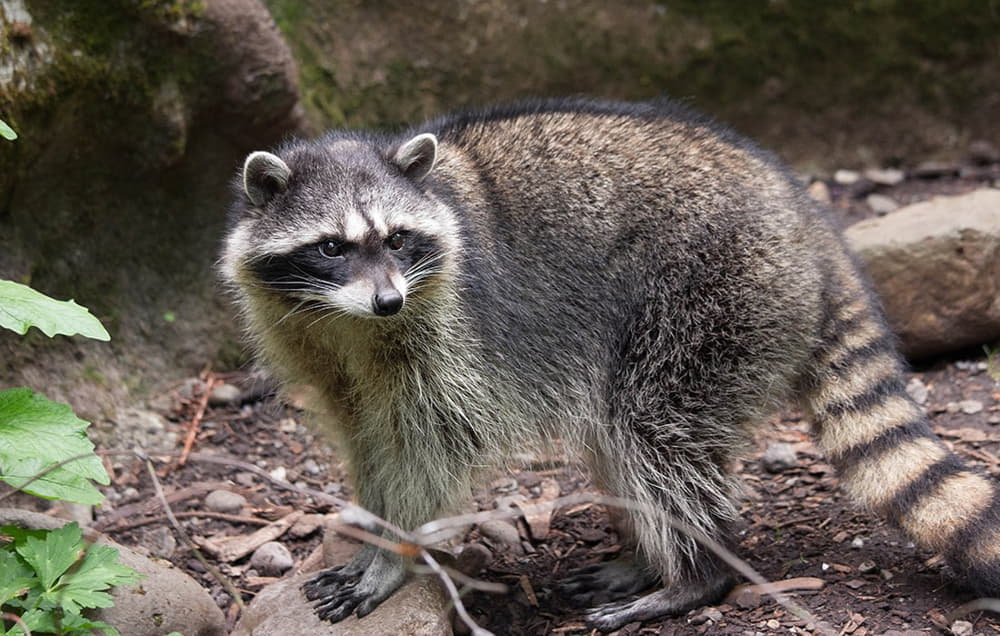Raccoons are nocturnal creatures. They often move long distances to find food, water and shelter at night. So, do you know how far do raccoons travel in a night? The average distance a raccoon moves per night is influenced by key factors such as gender, availability of food, time of year or territory.
A great deal of research has been done to determine or calculate the distance that a raccoon may walk in a night. The answer for this question is not straightforward. These cunning creatures are known to explore their surroundings. Raccoons can travel a lot of land when looking for food and adventure, from climbing trees to swimming across rivers.
A raccoon can travel several miles in a single night. They are agile and curious creatures who explore their surroundings in search of food and shelter. Their ability to climb trees and swim allows them to migrate across habitats.
Table of Contents
How Far Do Raccoons Travel In A Night?
On average, raccoons travel as much as 2 to 3 miles in a single night. However, this distance can be much greater if they are searching for food or water sources that are further away from their den. Raccoons don’t like to exert much energy, so they will stay close to home. They often travel about 2 miles around their territory.
Raccoons who live near humans have an easier time finding food than wooded raccoons. When food is scarce, a raccoon in the woods usually has to travel longer to find it. Raccoons in cities always have a reliable source of food, as evidenced by their weight. Raccoons in cities can weigh up to 30 pounds more than raccoons in the woods.
Furthermore, raccoons’ nocturnal mobility is not solely about food acquisition. It also serves purposes such as mate-seeking, territory exploration, and avoiding potential predators.

During the mating season, which typically occurs between January and March, male raccoons begin to venture from their territory to look for a mate. They can travel 5 to 10 miles for searching. Male raccoons travel even further in search of potential mates, sometimes covering up to 18 miles in a single night. Raccoons also go this far when food is scarce.
The precise distances covered can be challenging to quantify precisely due to the variability in environmental conditions and individual behaviors. In short, male raccoons travel 3 to 20 square miles looking for food, shelter, and a mate. They return to familiar territory when the mating season has ended. Female raccoons travel 3 to 6 square miles looking for food and shelter. They usually choose the safest area in their territory to give birth because the kits cannot be moved until they are 8 weeks old.
Factors That Affect How Far Raccoons Travel
The distance that a raccoon travels depends on 5 factors, including: The availability of food, size of the raccoon’s territory, age, sex and the time of year. All of the above factors strongly impact the daily distance traveled by raccoon in different ways.
Availability Of Food
Food availability is the most significant factor that affects the daily movement of raccoons. Raccoons are opportunistic eaters, meaning they will eat anything, including fruits, vegetables, insects, small animals, and even garbage. Their diet largely depends on the availability of food in their habitat. Raccoons do not need to go as far if food is plentiful. If food becomes scarce, they have to go longer to obtain enough to eat.
Size Of The Raccoon’s Territory
The size of a raccoon’s territory also influences how far they can go. Raccoons in urban areas typically have smaller territories than raccoons in rural regions. This is because there is more food and shelter available in urban areas.
Age And Sex
Because younger raccoons are still exploring their surroundings and looking for food and mates, they tend to travel more than adult raccoon. Male raccoons also move more than females, particularly during the breeding season when they look for suitable mates. Female raccoons tend to stay in their dens more around breeding time to care for and protect their young.
Time Of Year
Raccoons adjust their movements based on seasonal changes. During spring and summer months, when food is abundant, they tend to stay in a smaller area because they do not need to travel far to find food. In the winter, when food is scarce, they need to travel further to find enough to eat.

Why Do Raccoons Travel At Night?
Raccoons travel at night because they are nocturnal animals, they spend their nights performing all of their basic survival chores. They begin their quest after the sun has fallen and head to the nearest locations where they anticipate to locate food for the day. Rivers, ponds, and small bodies of water like lakes usually provide them with good food.
Their plan is to travel just until they can’t find satisfying food, which surprisingly they can also find in trash cans nearby or on farms that have vegetables growing. Raccoons get fatigued after roaming around all night and return to their burrows by sunrise to catch up on the day’s slumber.
Do Raccoons Travel In Packs?
No, raccoons do not generally travel as a pack. The bulk of adult males are solitary foragers who only travel with other members of their species when it is vital for survival. When the weather is cold and food is scarce during the winter months, they join groups of four and forage together in small packs to discover easier sources of food.
Smaller groups make hunting more efficient, and raccoons usually target prey species that are abundant and easy to catch, such as fish, frogs, or turtles. Additionally, raccoons travel with other members of their species during mating seasons. During this time, they will frequently band together to fight off any other males attempting to claim territory or a female ready to mate. Raccoons also often travel in packs if they are defending themselves against hungry predators who want to eat them.

